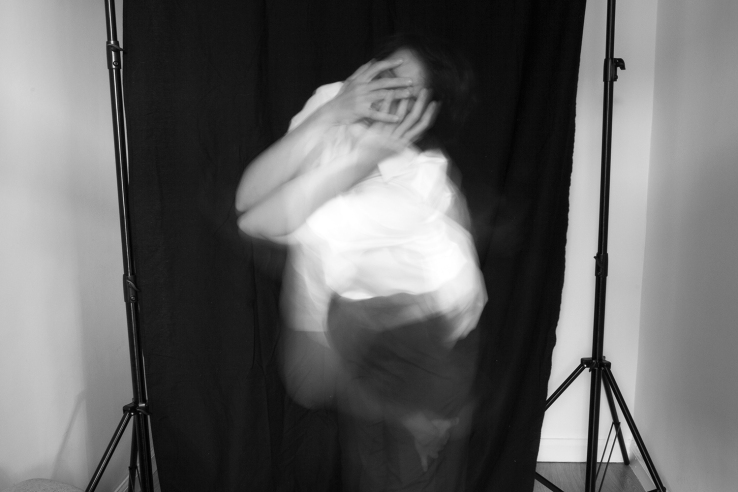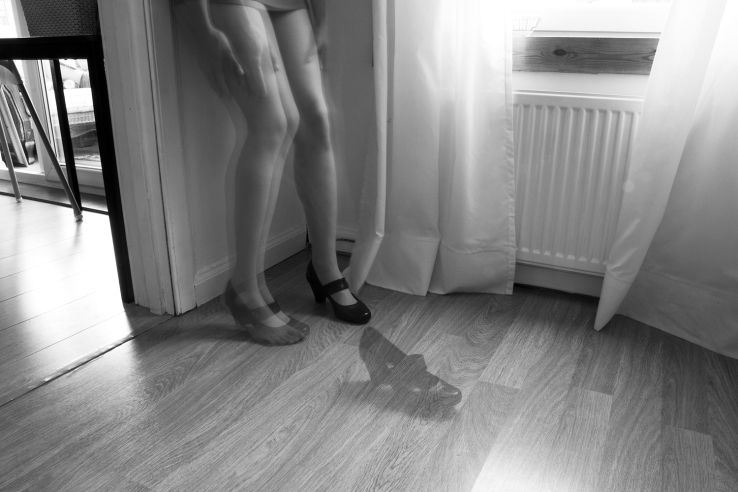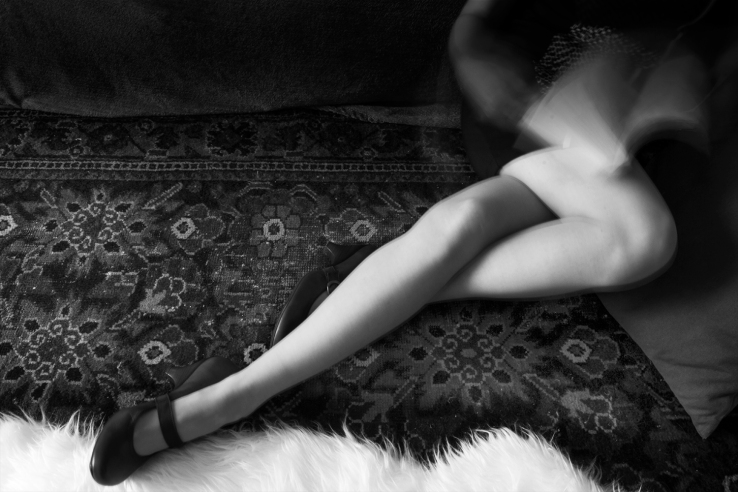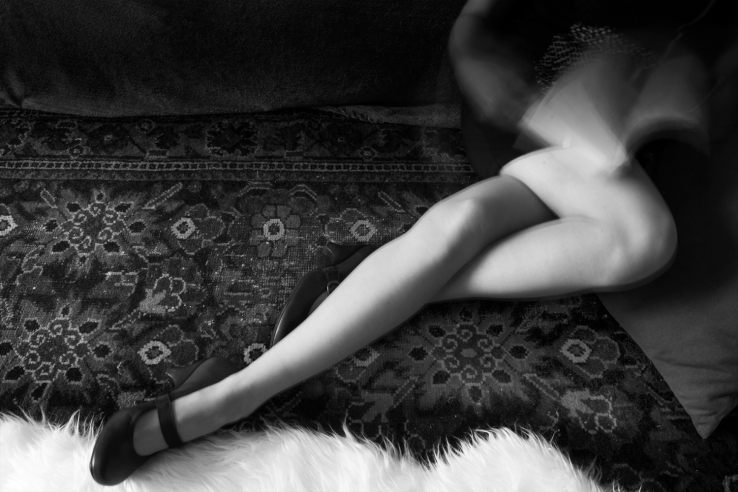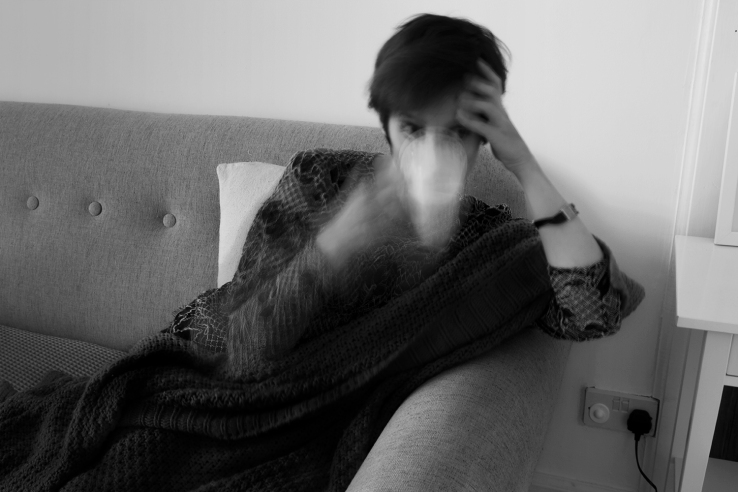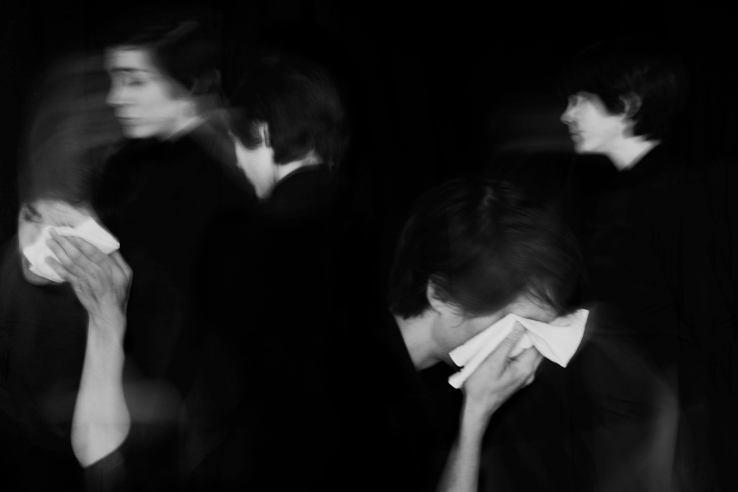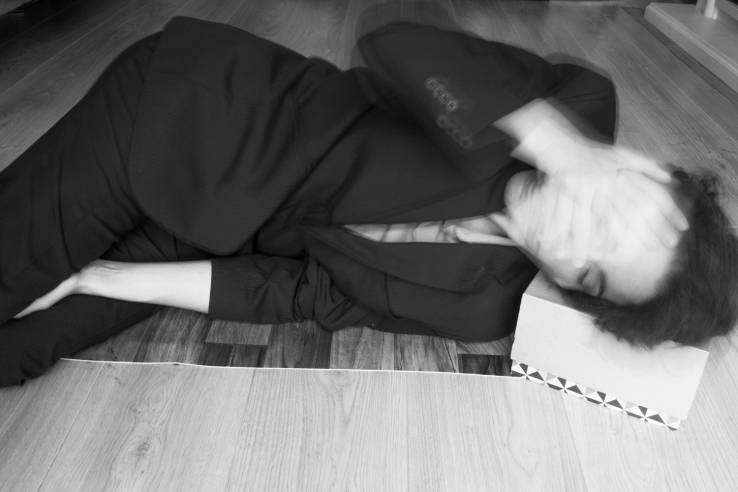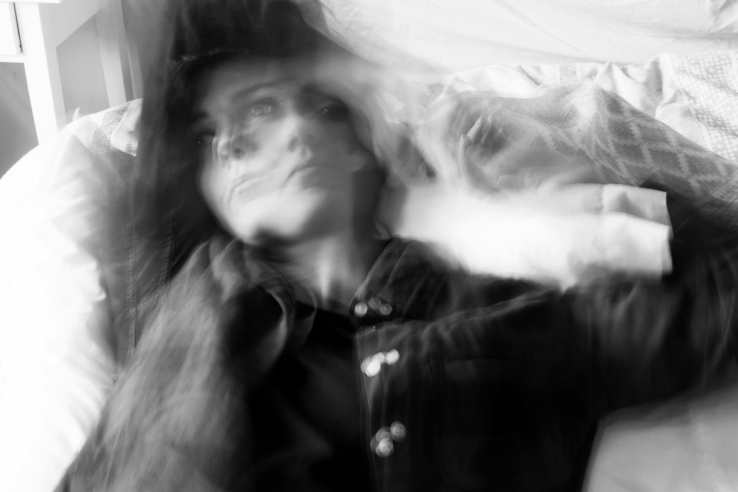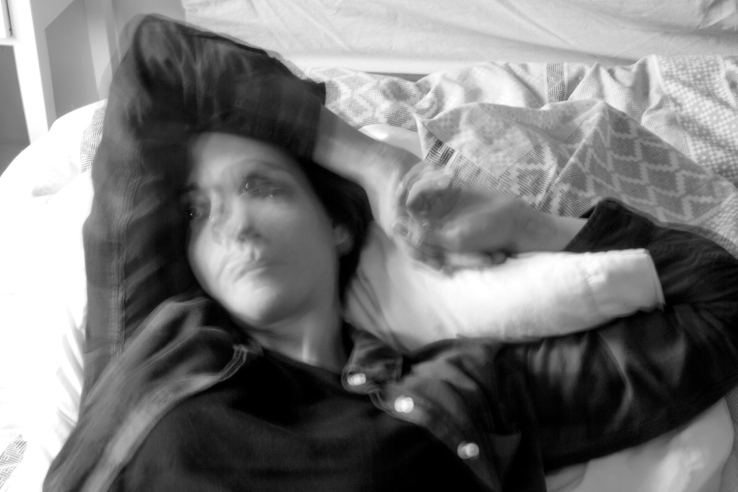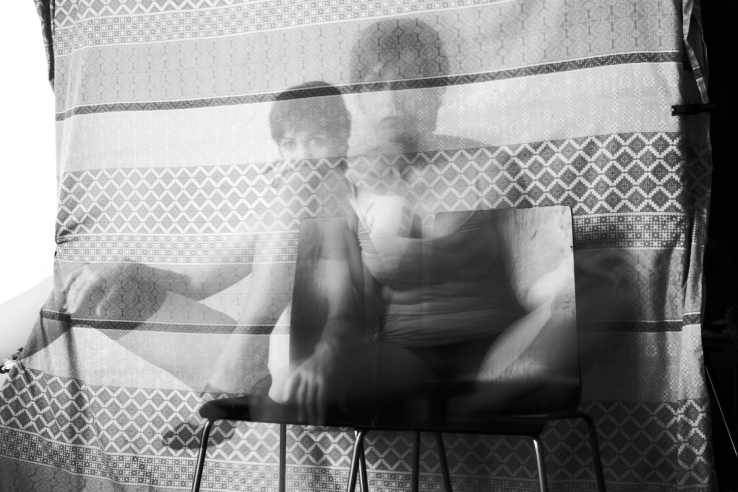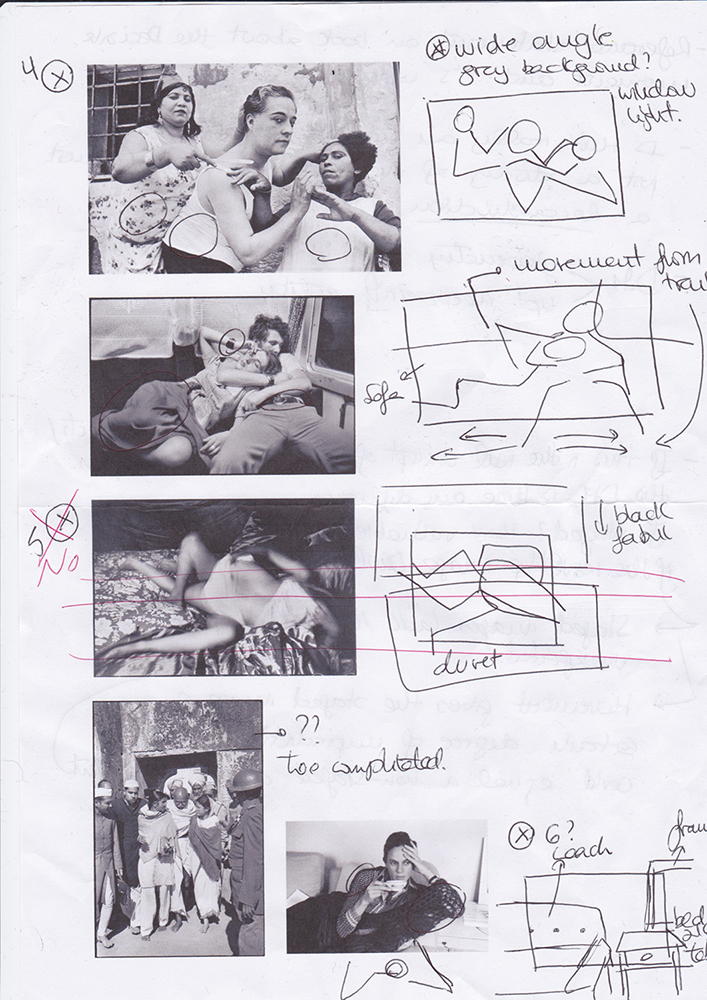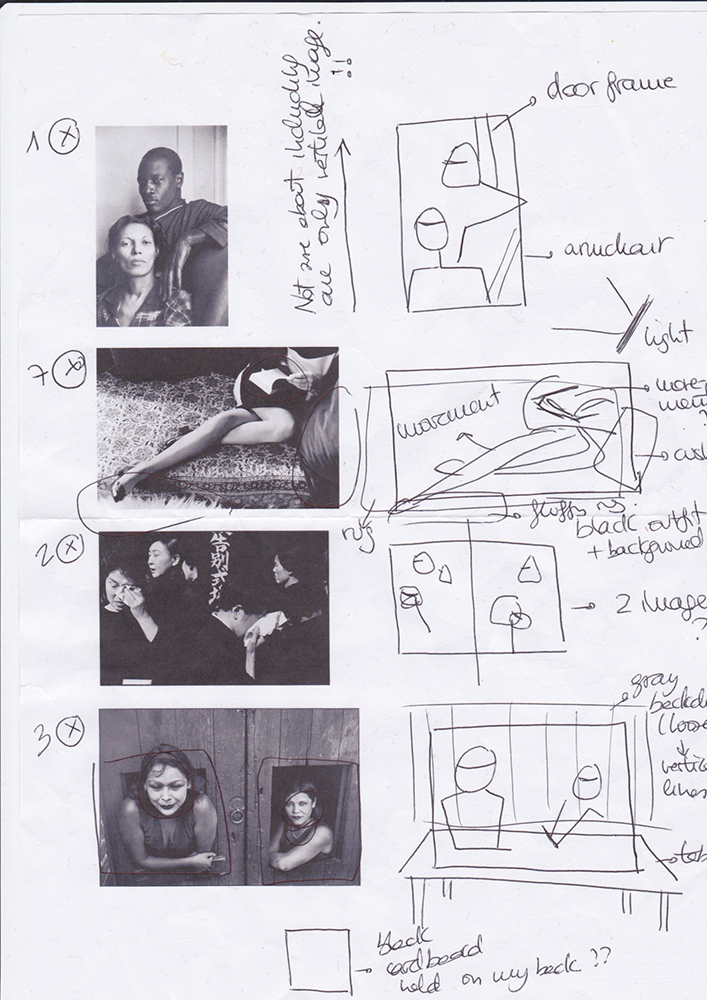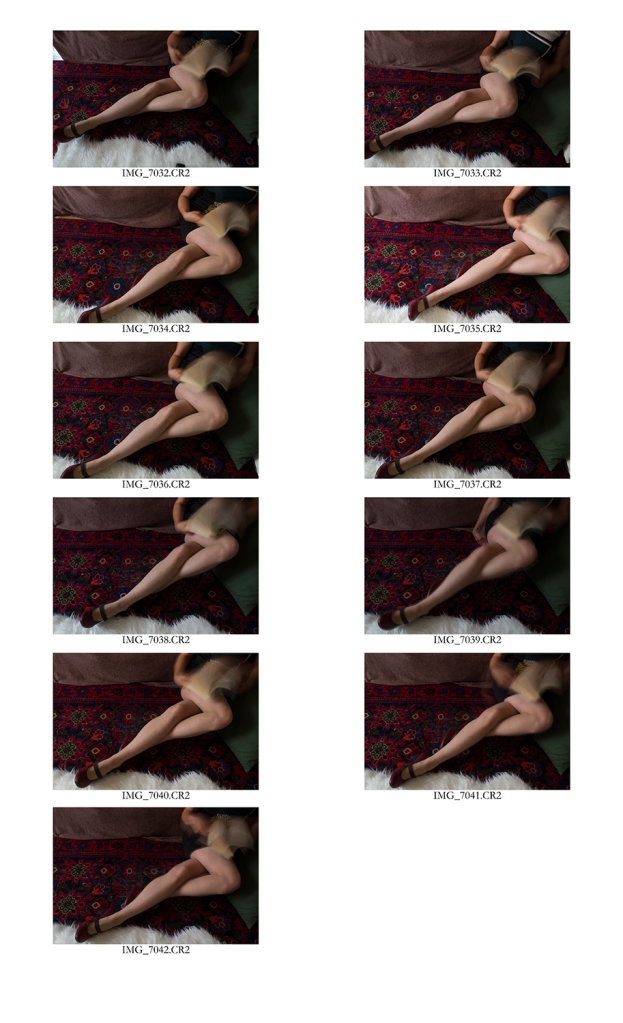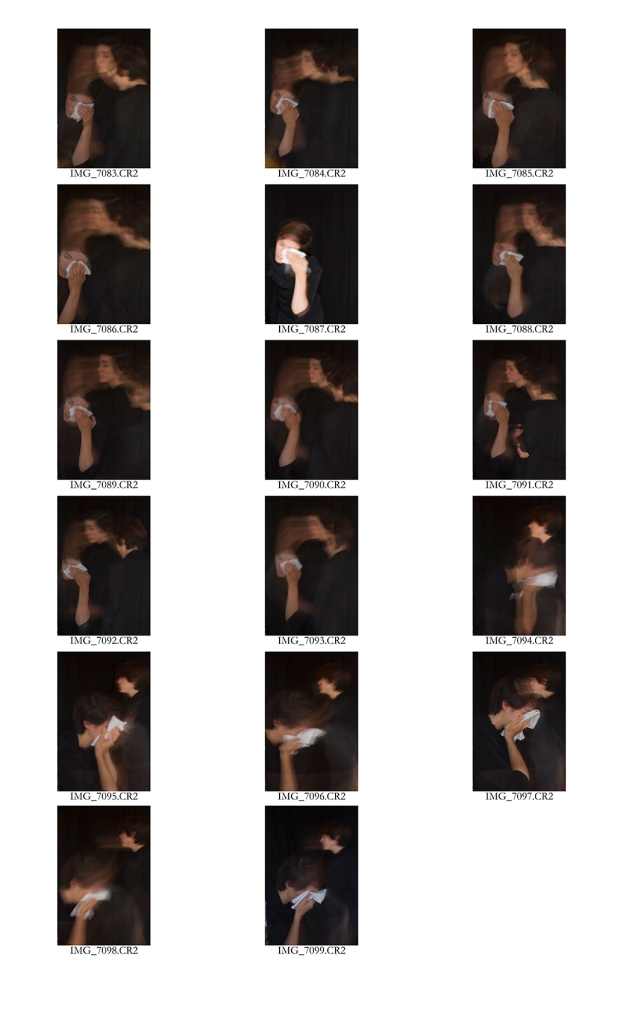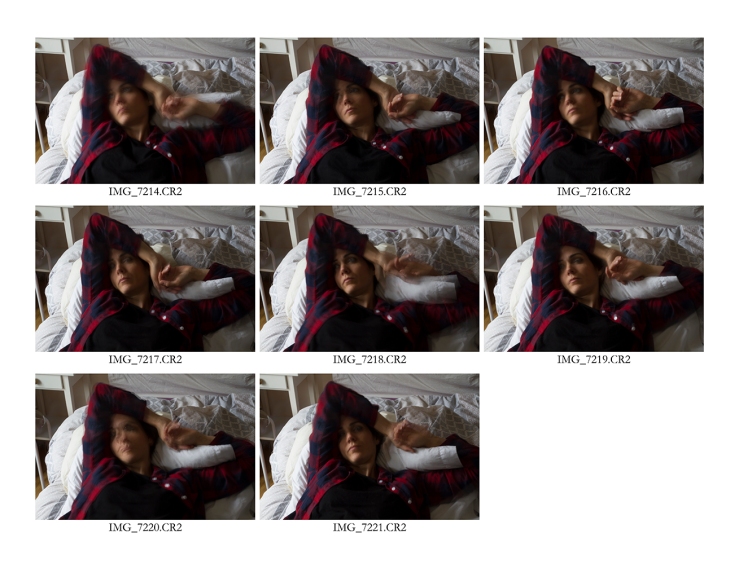Overall, the feedback on Assignment 3 was very positive. I am happy and relieved to see I have managed to express my understanding of the Decisive Moment and that my work is seen as creative and innovative.
Here there is a link to my tutor´s feedback and the reworked images below:
I have been asked to reshoot three of the images so the frame would not be so tight (Images 2, 4 and 5), also having both Henri Cartier-Bresson and Francesca Woodman in mind. Considering the space available for shooting this was an issue, as for two of the images I did not have enough room to move the camera back or the background would become distractive if shooting with a wider focal length. I also had concerns about how the final series would look if half of the images turned to be too different from the original photographs I tried to emulate and how this would be perceived by the viewer without access to the notes and process. My perception at this point was that my tutor wanted me to take this assignment a step forward and so I felt this was also necessary, specially if a new aesthetic approach was to be introduced.
Therefore, I resolved to reshoot all the images, opening the scene and thinking of the relationship between the subject and the frame as shown through Francesca Woodman´s work (as my tutor pointed out on verbal feedback). Still, my idea was to keep distinctive elements from the first submission on each image to provide not just a sense of continuity but also contributing to the overall composition. As in the first attempt, I kept an eye on geometry and the balance between black and white areas.
To start with, I thought of Woodman´s indoor photographs so partially emptied a room and used it as a stage for all the images. It is a very small room so creating a set of different images was an exciting challenge.
Generally, I enjoyed the freedom of creating my own photographs rather than reproducing others´in a literal way. I drew a quick sketch of how the new scenes could be approached and composed but I looked mainly at the original images for inspiration while shooting.
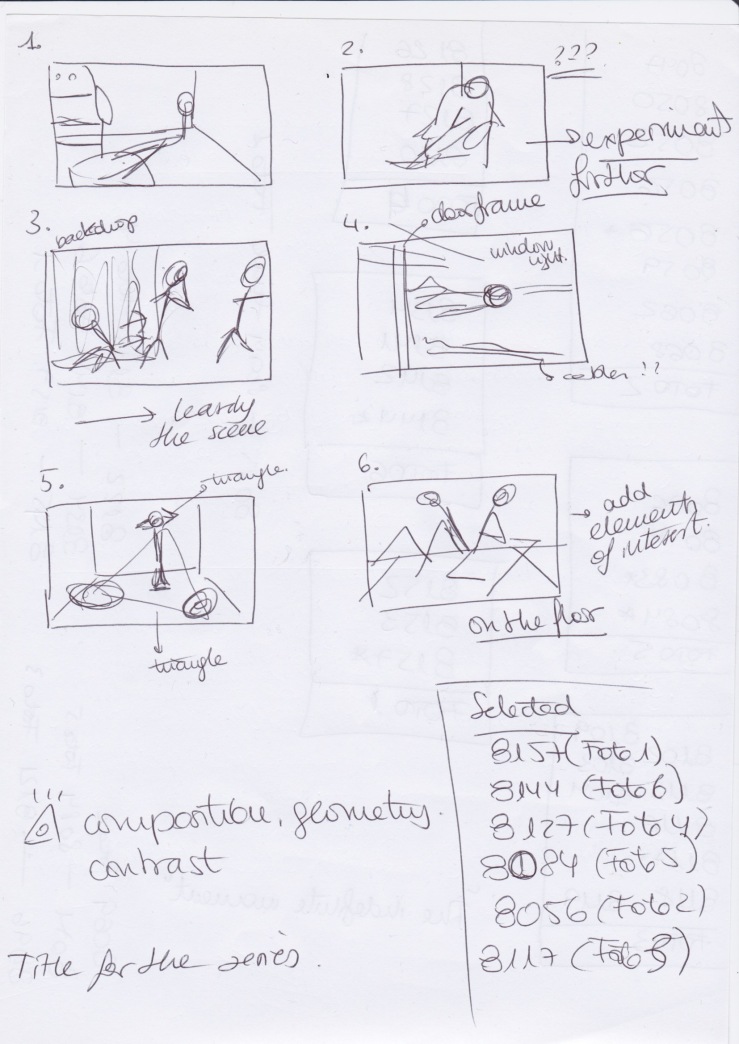
Overall, I find the new set of images more successful as they don’t only reflect my thoughts on the Decisive Moment but also feel more like my own work. Reworking the assignment has also teach me to look further, even when an image can be considered done there is always room for development or at least to ask yourself the question “could have I done it differently?” and explore all possibilities.
These are the reworked images, compared with the ones submitted earlier, contact sheets and exif data:
Image 1

Although this was the easiest image to emulate at first, it has been the most difficult to reshoot. Initially, I wanted to keep the element of the book and the movement of the pages. This was the result:
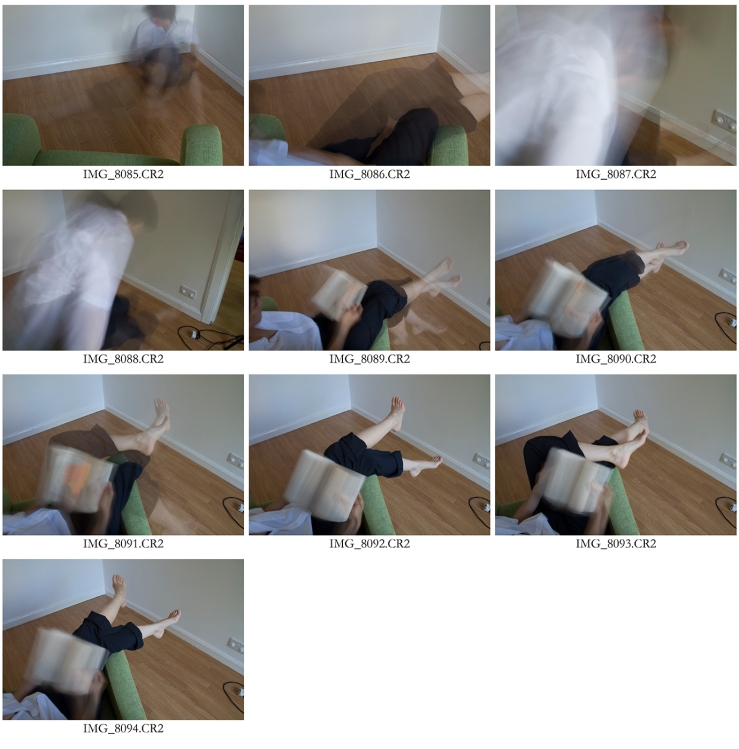
Somehow I thought the composition and approach were weak and it did not tell anything new that would justify a reshoot. Analyzing the elements on it I realized the book was not relevant; it didn’t add to the composition. The original title of Henri Cartier-Bresson “Martine´s legs” gave me the clue to change the focus onto the legs so my aim here was to find a way to create and interesting composition introducing movement in a different way. I played with the idea of taking my shoe off and realized long exposure allowed me to have one shoe on and off in the same frame, so I shot until I was happy with the effect and the position of the elements on the image. This is probably the image that most reminded me of Francesca Woodman. It is the last I shot and I feel I was very much involved with the creative process here, not thinking too much on the outcome but enjoying the process instead.
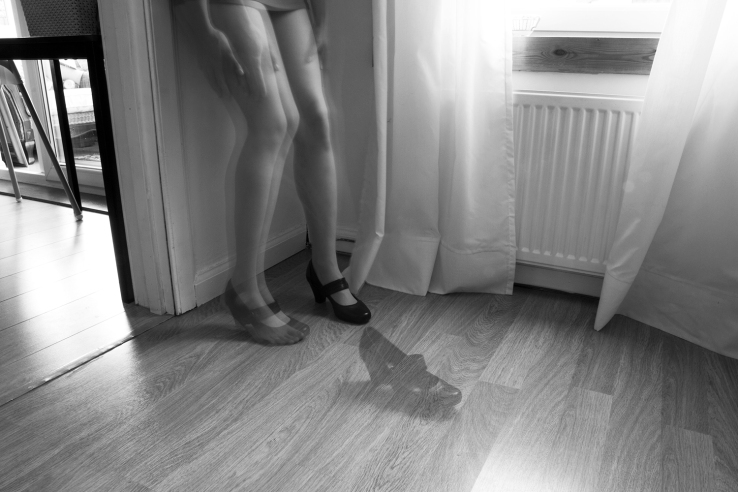
ISO: 100, 8″, f/22, 17mm.
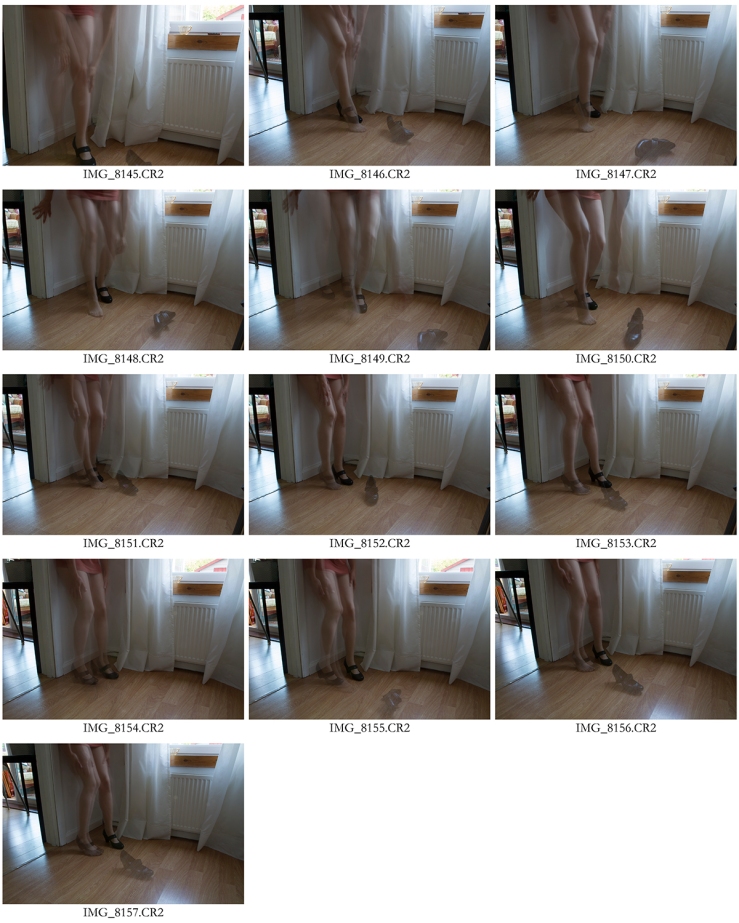
[Image selected: 8157]
Image 2

This is one of the images that needed reshooting. I kept the element of the cup to help me come up with a movement that would feel natural and coherent. It was the first image to be reworked so I was not completely sure about what I wanted to achieve visually, so tried different poses taking the original pose as a starting point.
The elements on the background (armchair and light stand with soft-box) are accidental as that is the original place they have in that particular room. I wanted to maintain a homey feeling, thinking of Henri Cartier-Bresson´s wife relaxing on their coach. I chose that corner as the armchair is a small version of the coach I used on the original submission. The light added some interest and as Martine was a photographer herself, it is a nice element to keep in what pretends to represent a photograph taken at home.
The movement is fluid and so it is the general feel of the image. Again, the freedom of composing my own way helped me to achieve the shot and gave me also more confidence since I could explore different possibilities.
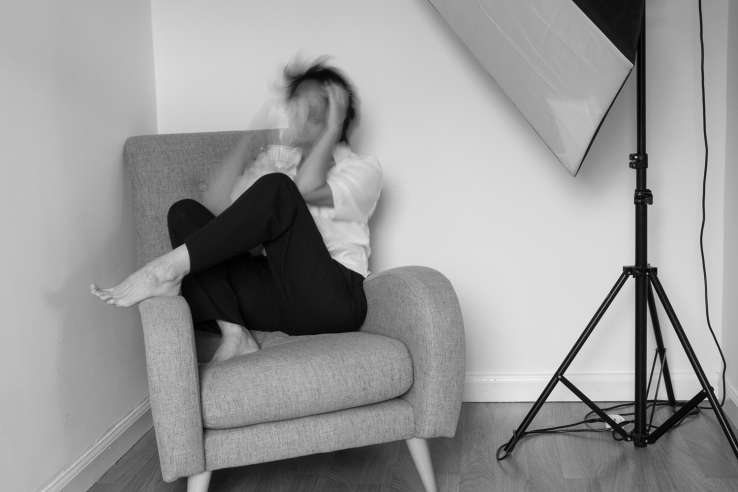
ISO: 100, 4″, f/22, 29mm.
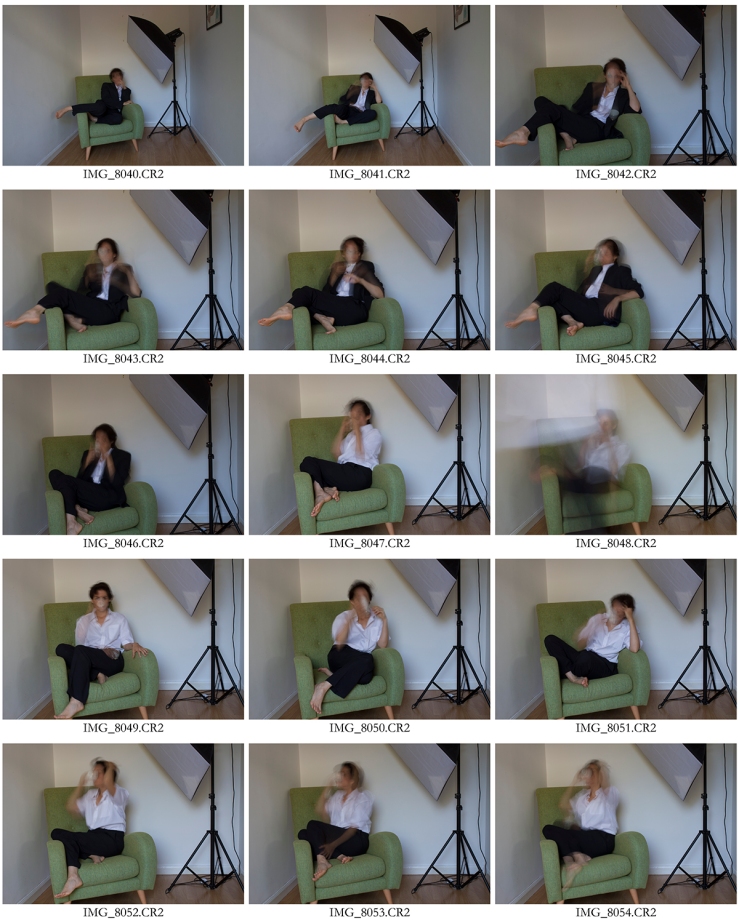
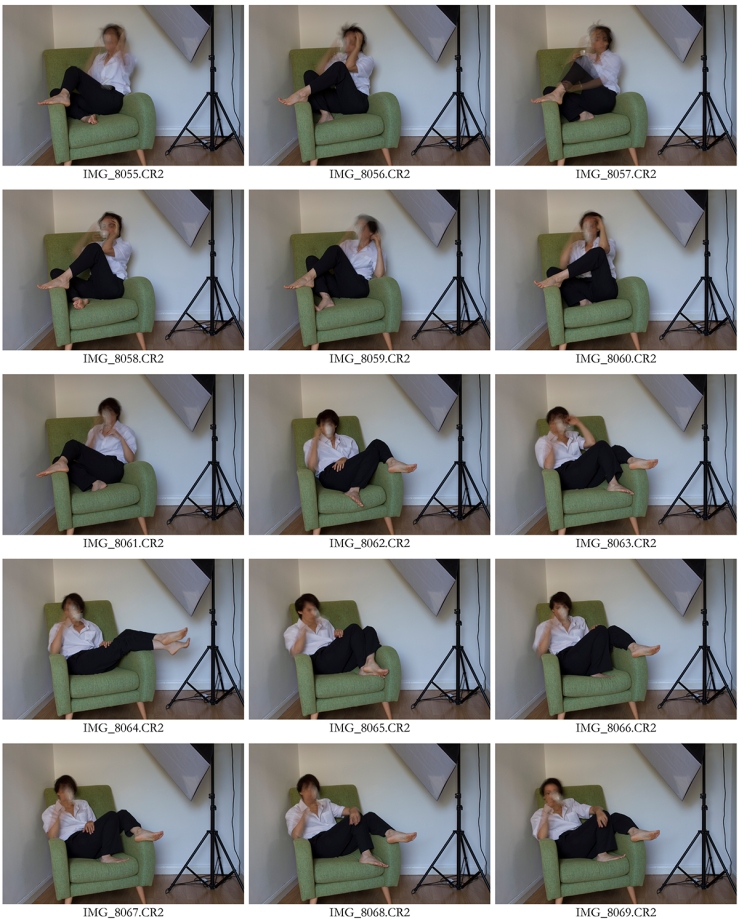
[Image selected: 8056]
Image 3

Funeral of a Kabuki actor was one of the hardest images to emulate. For this second attempt, I thought of simplifying the scene to a minimum while keeping a fair amount of movement. The result seems a bit inconclusive and open to interpretation on what this moment is about.
The backdrop and stand have two purposes: firstly, I wanted a black background to match the original and secondly, both elements resemble the flag that divides the original image by Henri Cartier-Bresson, which was missing on my first approach. I looked for contrast so kept my clothes white, which remind me of the handkerchiefs on the left image and also helps introducing a bigger sense of movement.
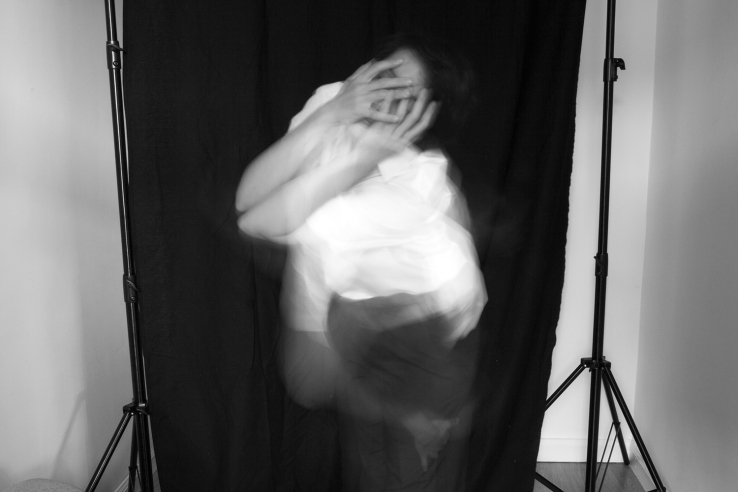
ISO: 100, 6″, f/22, 24mm
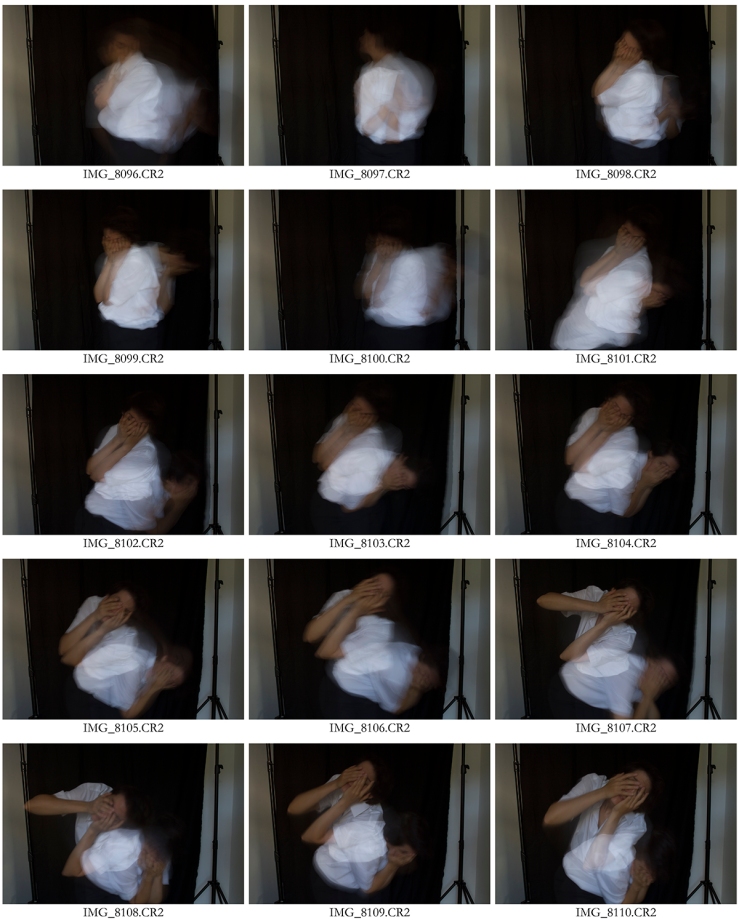
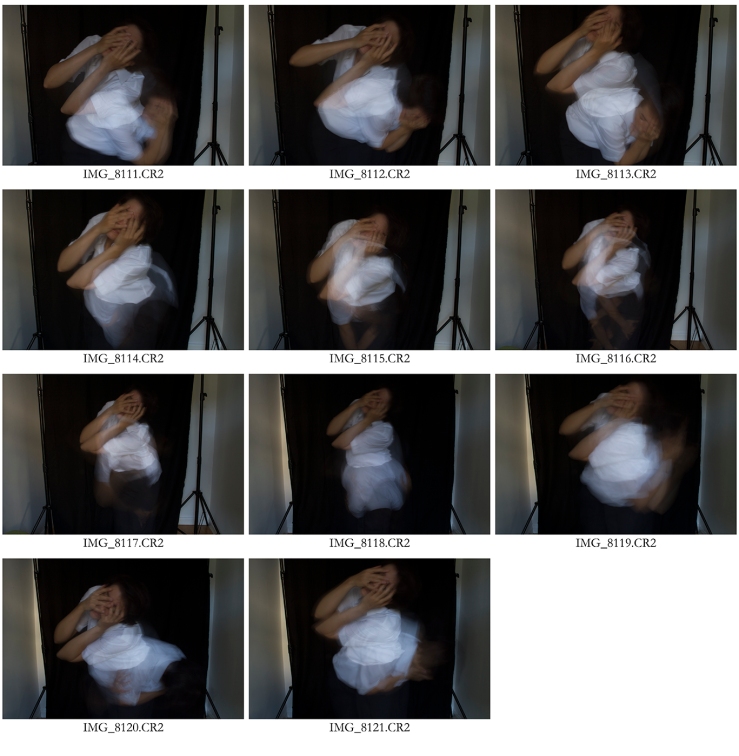
[Image selected: 8117]
Image 4

This was my favourite image from the original submission so it hurt a bit when I knew I was to reshoot it.
I put the camera outside the room so the door frame and part of the wall and a table appear on the left side of the image. This locates the subject and adds some additional framing; I think it makes the image more interesting, as if someone would be spying from outside the scene. Initially, I shot on the same dark suit as on the picture of the left but I wanted to catch the light from the window to create lighter areas. The element of the box was discarded as again, it wasn’t relevant. I see this new image as the one that connects Image 1 and Image 6.
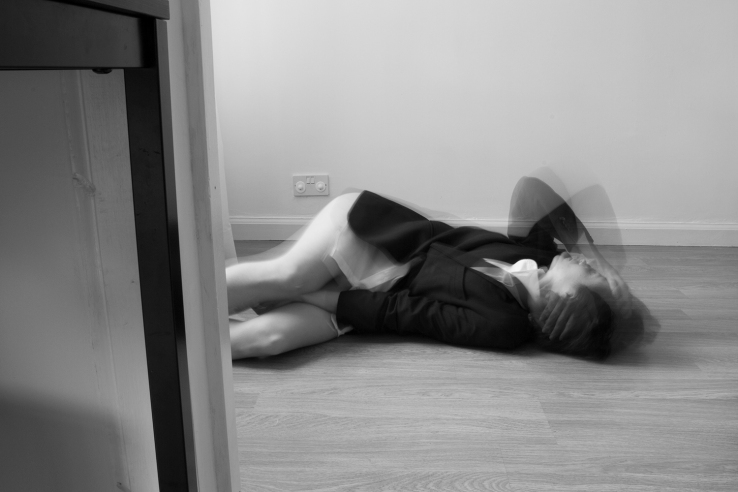
ISO: 100, 6″, f/22, 21mm
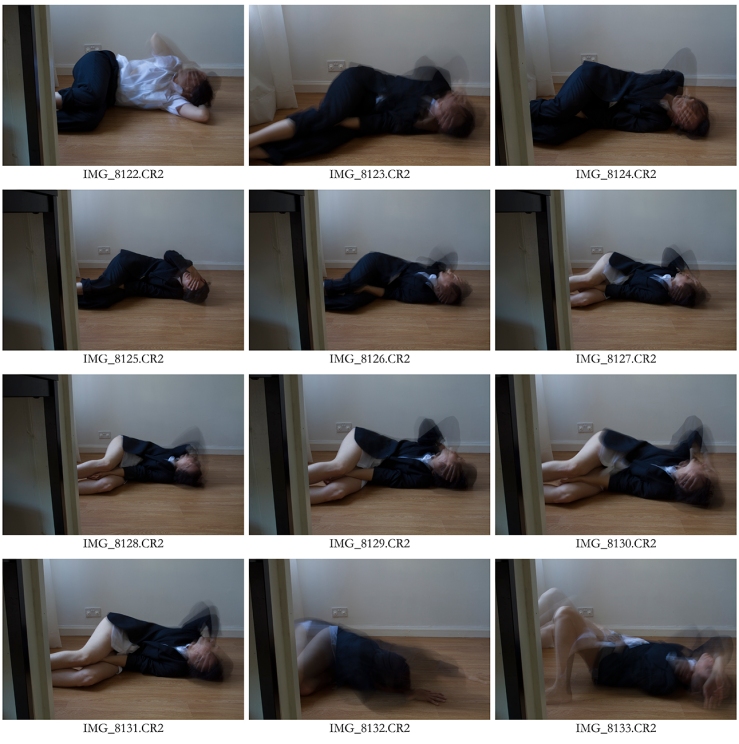
[Selected image: 8127]
Image 5

The only elements I kept from the first attempt here are the position of the arms and the look into the camera. This was another favourite that needed to be reshot. I still prefer the first version but not within the new series. However, I feel this image is more personal.
It is a very simple photograph but I believe effective. I looked for triangles in the composition to match the position of the arms and the lines of the wall and skirting board to direct the eyes into the subject. The idea of the Decisive Moment comes to me here as I image the scene as a portrait (rather than a self-portrait). I picture the photographer´s approach to his or her sitter: when to shoot? Which moment would represent better the subject? Is it about the pose or about the mood of the sitter? Or is it about the overall feeling of the image (composition, expression, contrast, theme…?).
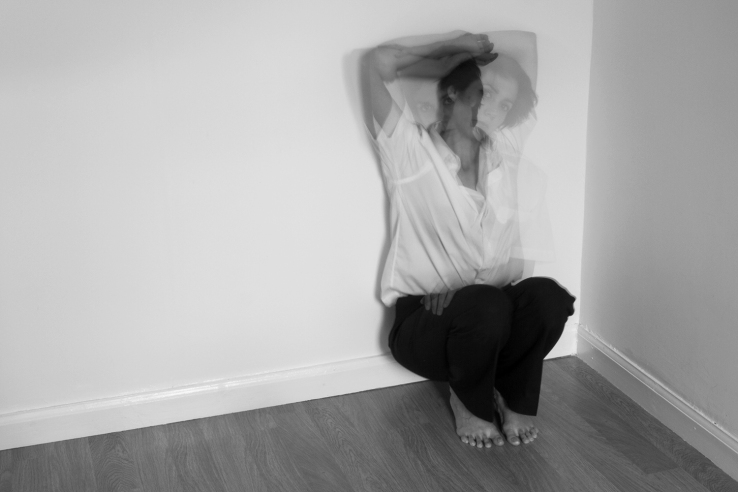
ISO: 100, 6″, f/32, 32mm.
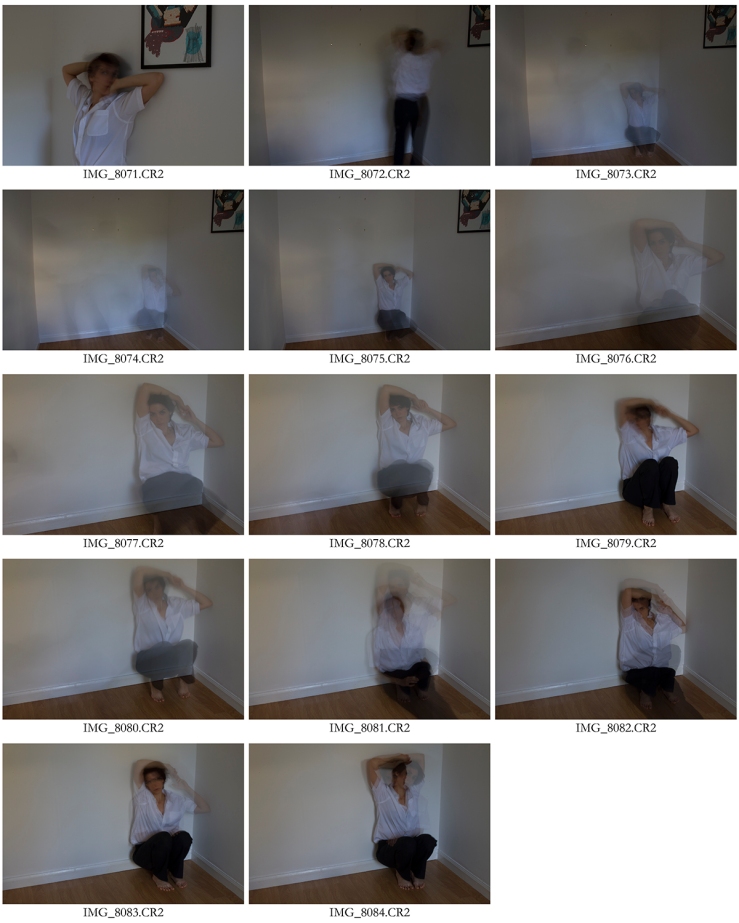
[Selected image: 8084]
Image 6

I did not know hot to reinterpret this photograph until I started shooting. Keeping the shapes created by the position of arms and legs was a must so I focused on that. To connect both before and after versions, I brought the two black chairs into the scene and experimented from there.
I see lots of elements of duality in this photograph. The two chairs, two people, two bits of curtain. The window slightly open, letting fresh air come in and the subject suffocating with the curtain around the head. It could be interesting to know what others think about this. It was not something intentional but I can see some concept there when looking at the image.
As a quirky detail, my phone sits on the window sill with the original images opened on the screen, as a little reference/secret. I see this image as a continuation of Image 5 on the series.
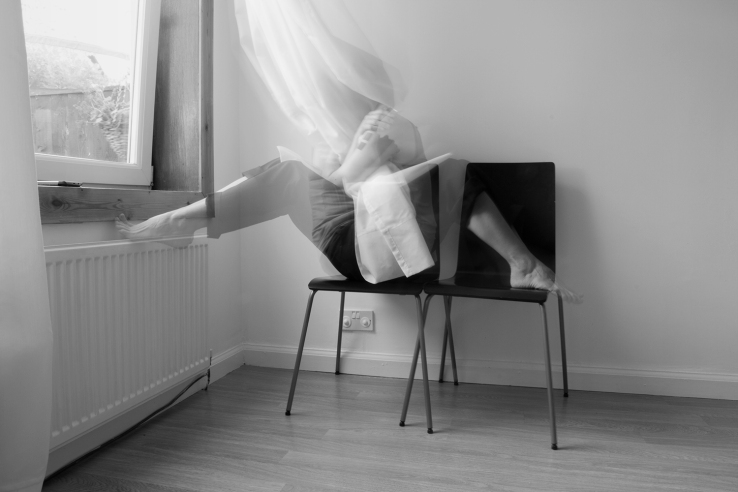
ISO: 100, 10″, f/22, 17mm.
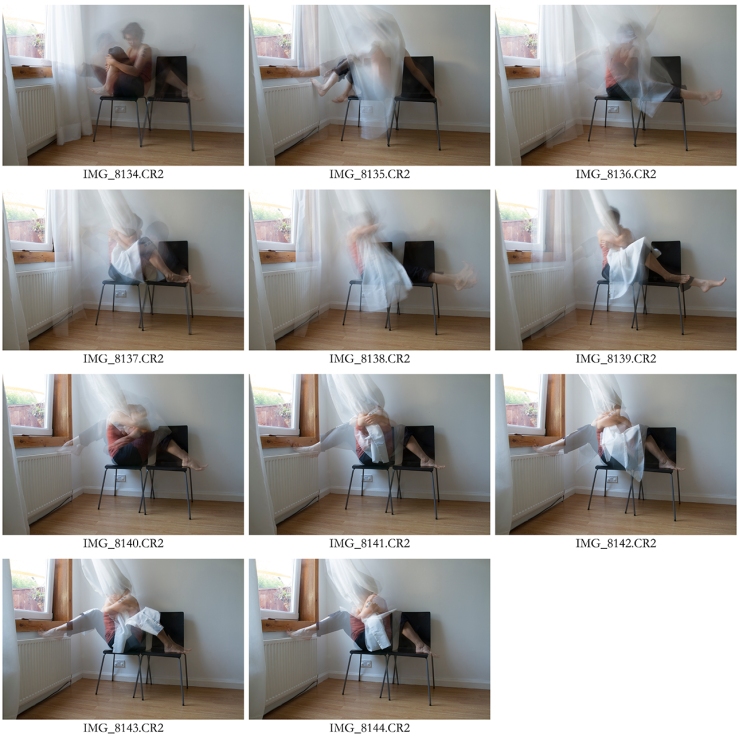
[Selected image: 8144]
As part of the changes suggested by my tutor, I had to come up with a title for the series that would define “the moment”. As I mentioned on my first impressions blog post, it was my intention to “fragment” the Decisive Moment, yet my tutor does not see the series as Fragmented or Indecisive Moments, but more like “Tentative Moments”.
I have been looking for a word that would define define my approach to the Decisive Moment. I considered how long exposures and movement have resulted in a series that record action by freezing every stage of it. Each of these images tells a story by offering a wider view of the moment: showing how it started, how it finished and what happened in between, even though the other of these stages is subjective. It is not possible to state how long the action lasted by only looking at the images. I therefore thought a good name for these photographs would be “Indefinite Moments“.
[Indefinite: lasting for an unknown length of time.]
I have also come up with the decision of changing the order of the images, taking into account the new connections I perceive between them.



